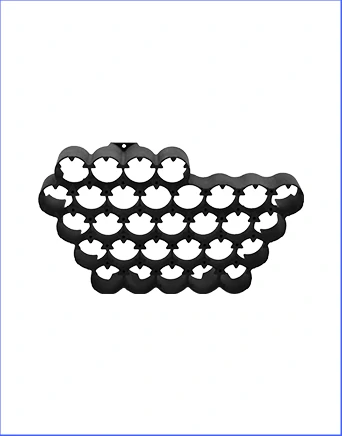Time to read: 6 min

Injection Molding: A Proven Workhouse
Injection molding is a time-tested method for producing complex plastic parts efficiently at scale. It involves melting raw plastic pellets and injecting them into a mold under high pressure. Once cooled and solidified, the molded parts are ejected for further use or post-processing.
Materials Utilized in Injection Molding:
- Polyethylene (PE)
- Polyvinyl Chloride (PVC)
- Polypropylene (PP)
- Nylon
- Polycarbonate (PC)
- ABS
- And more, including metals and thermoset composites for specific applications.
Applications of Injection Molding:
- Automotive components like bumpers and dashboards
- Aerospace elements such as airflow vents and cabin components
- Medical devices including surgical instruments and implants
- Food processing equipment like packaging containers and utensils
3D Printing: The Modern Innovator
3D printing, or additive manufacturing, builds objects layer by layer according to a CAD design. This technology is particularly adept at creating complex geometries and is ideal for rapid prototyping and low to medium-volume production.
Materials for 3D Printing:
- Polylactic Acid (PLA)
- ABS
- PETG
- Nylon
- Stainless Steel
- Carbon Fiber and Glass-filled composites
Applications of 3D Printing:
- Aerospace prototypes and fuel nozzles
- Automotive dashboard components and custom parts
- Medical applications such as prosthetics and surgical guides
- Consumer products like phone cases and eyewear frames
Key Differences in Manufacturing Capabilities
Volume Production:
- Injection molding excels in medium to large-scale production due to模具的高成本摊销.
- 3D printing is cost-effective for prototyping and low-volume runs, with no tooling required.
Design Complexity and Customization:
- 3D printing offers greater design flexibility, accommodating complex features and geometries.
- Injection molding may face limitations due to mold design constraints.
Part Size and Tolerance:
- Injection molding can produce a wide range of part sizes with uniform tolerances.
- 3D printing is suitable for smaller parts with the potential for tighter tolerances.
Turnaround Time:
- Injection molding has a longer initial setup due to mold creation but is efficient post-setup.
- 3D printing offers faster initial production times without the need for molds.
Strength and Surface Finish:
- Injection molded parts generally have higher mechanical strength and smoother surfaces.
- 3D printed parts may require post-processing for smoothness and structural enhancement.
Material Wastage:
- Injection molding can generate recyclable waste during the molding process.
- 3D printing is typically more material-efficient, with minimal waste.
Cost Considerations
Initial Setup and Tooling Costs:
- Injection molding involves higher upfront costs due to mold creation.
- 3D printing has lower initial costs, with expenses primarily tied to printers and materials.
Production Volume Costs:
- Injection molding's per-unit cost decreases with higher production volumes.
- 3D printing costs can vary depending on material and technology used.
Labor and Material Costs:
- Injection molding may incur higher labor costs due to mold design and maintenance.
- 3D printing reduces labor costs through automation but may use more specialized, costly materials.
Conclusion
The decision between injection molding and 3D printing hinges on factors such as production volume, budget, material choice, design complexity, and project specifications. Consulting with experienced manufacturers like Unofactory can provide valuable insights to determine the most suitable method for your project.
Unofactory offers comprehensive services in both injection molding and 3D printing, ensuring quality, affordability, and client-centric communication. With over 100 material options and advanced machinery, we are equipped to handle a wide array of projects.
FAQs:
- Is 3D Printing Cheaper than Injection Molding? It is generally more cost-effective for low-volume production.
- Is 3D Printing Better than Injection Molding? It is superior for custom parts and prototypes, offering design flexibility.
- Will 3D Printing Replace Injection Molding? Unlikely; both technologies will likely coexist, complementing each other in the manufacturing landscape.




